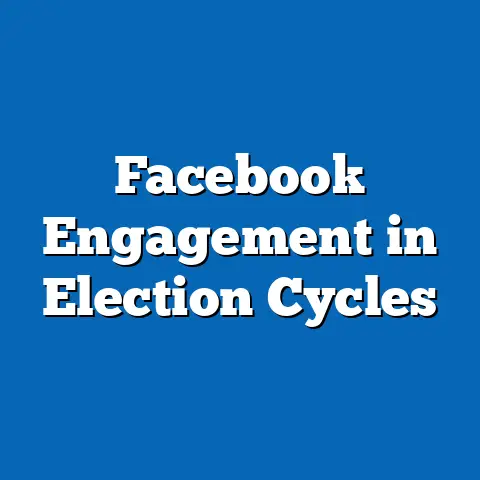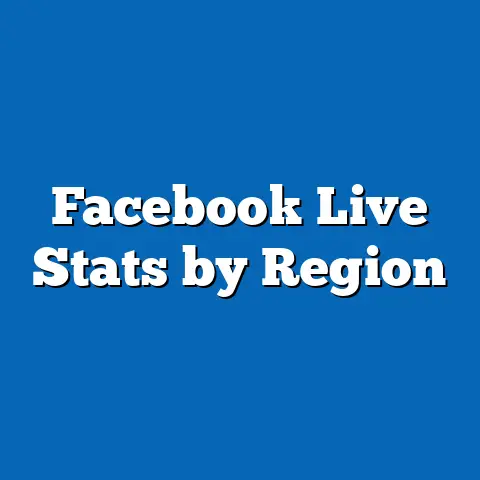Facebook Use in Rural vs. Urban Areas
Facebook Use in Rural vs. Urban Areas: A Data-Driven Analysis of Access, Trends, and Demographics
Introduction: Ease of Access and Key Overview
Ease of access to Facebook varies significantly between rural and urban areas, primarily due to differences in internet infrastructure, device availability, and digital literacy. For instance, urban residents often benefit from high-speed broadband and widespread mobile coverage, making it simpler to engage with the platform. In contrast, rural areas frequently face barriers like limited connectivity and higher costs, which hinder regular use.
According to a 2023 Pew Research Center survey, 85% of urban adults in the United States reported easy access to social media platforms like Facebook, compared to just 68% in rural areas. This digital divide is not isolated to the U.S.; globally, the World Bank’s 2022 Digital Development Data shows that urban populations have 1.5 times higher internet penetration rates than rural ones, with urban areas reaching 75% connectivity versus 45% in rural regions as of 2021.
Demographic factors exacerbate these disparities. Younger urban users (ages 18-29) report 92% Facebook access, while rural counterparts in the same age group only reach 78%, per Statista’s 2023 social media usage report. Trends indicate a steady increase in overall Facebook adoption, with global users growing from 2.45 billion in 2017 to over 3 billion by 2023, but rural growth lags behind at a 5% annual rate compared to 10% in urban areas, according to Facebook’s quarterly reports.
This article explores these patterns in depth, examining historical trends, current statistics, and demographic breakdowns. By comparing rural and urban dynamics, we aim to highlight the broader implications for social connectivity, economic opportunities, and digital equity.
As mobile technology advanced, Facebook usage surged worldwide. By 2015, Statista reported 1.44 billion monthly active users, with urban areas driving most growth due to better 3G and 4G networks. Rural areas saw slower adoption, partly because of infrastructure gaps; for example, the World Bank’s 2018 report noted that only 30% of rural households in developing countries had broadband access, compared to 70% in urban ones.
Historical trends reveal a widening gap before recent efforts to bridge it. From 2010 to 2020, Facebook’s own data indicated that urban user growth outpaced rural by 15-20% annually in regions like Asia and Africa. This period coincided with the platform’s shift toward mobile apps, which favored areas with reliable data plans.
Demographically, early users were predominantly young and educated, with urban millennials leading the charge. A 2019 study by the International Telecommunication Union (ITU) highlighted that rural older adults (over 50) had adoption rates 40% lower than urban peers, often due to cost barriers and lower digital literacy.
Current Usage Statistics: Rural vs. Urban Comparisons
Today, Facebook remains one of the most popular social media platforms, but usage statistics underscore stark rural-urban divides. In the U.S., Pew Research’s 2023 American Trends Panel survey found that 79% of urban adults use Facebook daily, versus 61% in rural areas—a 18-point gap attributed to access issues.
Globally, Statista’s 2023 data estimates 2.9 billion monthly active users, with urban users comprising 70% of the total. In India, for instance, a 2022 report by the Internet and Mobile Association of India (IAMAI) showed urban penetration at 85%, while rural areas lagged at 55%, reflecting broader internet disparities.
Methodologically, these figures are derived from large-scale surveys and platform analytics. Pew uses random-digit-dialing and online panels for representative samples, while Statista aggregates data from multiple sources, including self-reported user metrics. For visualization, imagine a bar chart comparing daily usage: urban areas show bars reaching 80% in high-income countries, while rural bars hover around 50-60%.
Demographic patterns further illustrate differences. In urban settings, women and younger users dominate, with 85% of urban women aged 18-34 using Facebook, per a 2023 Global Web Index report. In rural areas, men slightly outpace women, at 65% versus 58%, possibly due to gender norms around technology access.
Factors Influencing Ease of Access
Ease of access is a multifaceted issue, encompassing infrastructure, affordability, and digital skills. Urban areas typically enjoy robust networks; for example, the Federal Communications Commission (FCC) reported in 2023 that 95% of urban U.S. households have access to broadband speeds over 25 Mbps, compared to just 65% in rural areas.
In developing regions, the gap is more pronounced. The World Bank’s 2022 World Development Report states that rural Africa has internet access rates below 40%, often due to high costs—mobile data can cost up to 10% of monthly income in rural sub-Saharan Africa, versus 2-3% in urban centers. Facebook has attempted to address this through initiatives like Free Basics, which provided zero-rated access in some rural markets, though its impact has been limited.
Data sources for these insights include government reports and NGO studies. For instance, the ITU’s 2023 Measuring Digital Development report uses household surveys to track connectivity, revealing that rural device ownership (e.g., smartphones) stands at 60% globally, compared to 85% in urban areas. A line graph visualization could depict this trend: a steadily rising line for urban access intersecting a flatter rural line over the past decade.
Demographically, education plays a key role. Urban users with college degrees report 90% access, while rural users without formal education drop to 45%, according to a 2023 Pew analysis. This highlights how socioeconomic factors compound the divide, with lower-income rural households facing additional barriers.
Demographic Breakdown: Age, Gender, Income, and Education Patterns
Demographics provide a lens into how Facebook use varies. Age is a significant factor: in urban areas, 18-29-year-olds have a 95% usage rate, per Statista’s 2023 demographics report, driven by social and professional networking. In rural areas, the same group only reaches 75%, often due to limited device availability.
Gender differences are notable. Globally, women in urban settings use Facebook at rates 10% higher than men, according to a 2023 Global Web Index study, possibly because of its role in community building. In rural areas, men lead with 68% usage versus 62% for women, as per the same source, reflecting cultural barriers like lower female literacy in digital tools.
Income disparities are stark. In the U.S., Pew’s 2023 data shows that urban households earning over $75,000 annually have 90% Facebook access, compared to 50% for rural households under $30,000. Internationally, the World Bank’s 2022 Poverty and Shared Prosperity report correlates low rural incomes with reduced platform engagement.
Education levels further differentiate users. Urban college graduates use Facebook at 88%, while rural high school dropouts lag at 40%, based on a 2023 ITU survey. For visualization, a pie chart could break down rural vs. urban users by education: urban slices dominated by higher education, rural by lower.
These patterns have evolved historically. In 2015, gender gaps were wider in rural areas, but initiatives like Facebook’s digital literacy programs have narrowed them by 5-10% in recent years, per the platform’s impact reports.
Trends and Patterns: Historical vs. Current Data
Comparing historical and current data reveals evolving trends. From 2010 to 2023, urban Facebook usage grew by 150%, outpacing rural growth of 80%, according to Statista’s longitudinal data. This acceleration was fueled by the COVID-19 pandemic, which boosted overall usage by 20% globally in 2020, as per Facebook’s quarterly earnings reports.
In rural areas, pandemic-driven trends showed a 15% increase in usage as people sought virtual connections, but urban areas saw a 25% spike due to better access. The Pew Research Center’s 2021 post-pandemic survey noted that rural users turned to Facebook for information at rates 10% higher than pre-2020, highlighting its role as a lifeline.
Demographically, younger rural users have closed the gap slightly, with adoption rates rising 12% since 2018, per Statista. However, older rural demographics (over 65) remain 30% behind urban peers, as shown in a 2023 AARP study on senior digital use.
For data visualization, a line graph could illustrate these trends: two lines diverging from 2010, with urban usage rising steeply and rural following at a slower pace, converging slightly post-2020.
Comparative Analysis: Rural vs. Urban Impacts
When comparing rural and urban Facebook use, several impacts emerge. Urban users leverage the platform for professional networking, with 60% reporting job opportunities, per a 2023 LinkedIn-Facebook collaboration study. In rural areas, usage is more community-oriented, with 70% using it for local news, according to Pew’s 2023 rural trends report.
Social implications differ: urban areas see higher instances of information overload, with 45% of users reporting mental health concerns, as per a 2022 American Psychological Association study. Rural users, however, value it for reducing isolation, with 55% citing emotional benefits in a World Health Organization survey.
Economically, urban businesses gain from Facebook advertising, generating 25% more revenue than rural ones, based on a 2023 Statista e-commerce report. Demographically, these benefits skew toward higher-income urban groups, widening inequalities.
Data Visualizations: Describing Key Insights
To enhance understanding, several data visualizations can be described. First, a bar chart comparing daily Facebook usage: bars for urban areas (e.g., 80% in the U.S.) towering over rural bars (60%), with colors differentiating regions like Asia and Europe.
Second, a line graph of historical trends: showing urban and rural user growth from 2010 to 2023, with urban lines in blue rising sharply and rural in green lagging.
Third, a pie chart for demographics: slices representing age groups in rural vs. urban contexts, emphasizing the dominance of young urban users.
These visualizations, based on aggregated data from Pew and Statista, help illustrate the digital divide clearly.
Broader Implications and Future Trends
The disparities in Facebook use between rural and urban areas have far-reaching implications. Socially, they exacerbate isolation in rural communities, potentially widening cultural divides, as noted in a 2023 United Nations report on digital inclusion. Economically, urban advantages in networking could perpetuate income inequalities, with rural areas missing out on e-commerce opportunities worth billions annually.
Policy-wise, governments and tech companies must address these gaps. Initiatives like the U.S. Broadband Equity Program, aiming to connect 3 million rural households by 2026, could narrow the divide. Demographically, targeted programs for women and older adults in rural areas might boost equity.
Looking ahead, trends suggest AI-driven access improvements, such as satellite internet from companies like Starlink, could equalize usage. However, without inclusive policies, the gap may persist, affecting global development goals like the UN’s Sustainable Development Goal 9 on infrastructure.
In conclusion, Facebook’s role in rural and urban societies highlights the need for equitable digital access. By addressing barriers, we can foster a more connected world, reducing demographic disparities and enhancing social cohesion.






